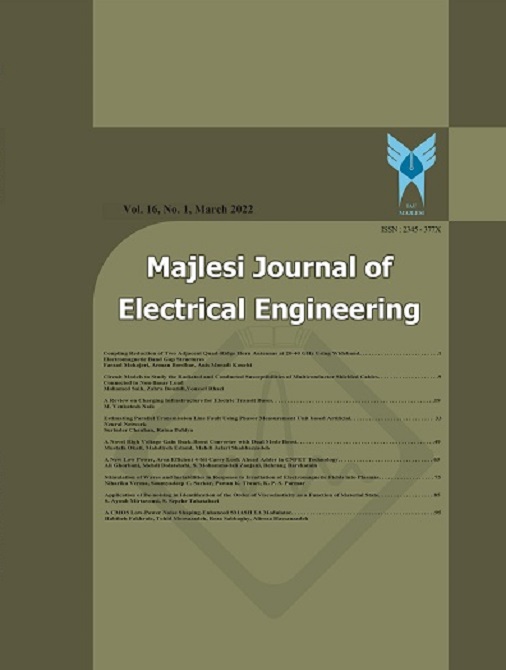[1] P. Capadelli, E. Casiraghi, G. Lombardi, “Automatic liver segmentation from abdominal CT scans”, in: Proceedings of 14th International Conference on Image Analysis and Processing (ICIAP), 2007, pp.731-736.
[2] C. Bartolozzi, C.D. Pina, D. Cioni, L. Croceti, E. Batini, R. Lencioni, “Magnetic Resonance: Focal Liver Lesions Detection”, Characterization, Ablation, Medical Radiology, Springer, Berlin, 2005.
[3] C. Platero, J.M. Ponacela, P. Gonzalez, M.C. Tobary, J. Sanguino, G. Asensio, E. Santos, “Liver segmentation for hepatic lesions detection and characterization”, in: Proceedings of 5th IEEE International Symposium on Biomedical Imaging, 2008, pp. 13-16.
[4] V. Grau, A.U.J. Mewes, M. Alcaniz, R. Kikinis, S.K. Warfield, “Improved watershed transform for medical image segmentation using prior information”, IEEE Trans. Med. Imag., 23 (4) (2004) 447- 458.
[5] G. Chen, L. Gu, L. Qian, J. Xu, “An improved level set for liver segmentation and perfusion analysis in MRIs”, IEEE Trans. Image Process., 30 (1) (2009) 94-103.
[6] Z. Yuan, Y. Wang, J. Yang, Y. Liu, “A novel automatic liver segmentation technique for MR Images”, in: Proceedings of 3rd International Congress on Image and Signal Processing (CISP2010), 2010, pp. 1282-1286.
[7] S. Luo, Q. Hu, X. He, J. Li, J.S. Jin, M. Park, “Automatic liver parenchyma segmentation from abdominal CT images using support vector machines”, in: Proceedings of International Conference on Complex Medical Engineering (ICME), 2009, pp.1-5.
[8] X. Zhang, J. Tian, K. Deng, Y. Wu, X. Li, “Automatic liver segmentation using a statistical shape model with optimal surface detection”, IEEE Trans. Biomed. Eng., 57 (10) (2010) 2622-2626.
[9] H. Badakhshannoory, P. Saeedi, “A model-based validation scheme for organ segmentation in CT scan volumes”, IEEE Trans. Biomed. Eng., 58 (9) (2011) 2681–2693.
[10] H. Lamecker, T. Lange, M. Seebass, “Segmentation of the liver using a 3d statistical shape model”, Technical Report, Zuse Institue, Berlin (2004).
[11] L. Rusko, G. Bekes, M. Fidrich, “Automatic segmentation of the liver from multi- and single-phase contrast-enhanced CT images”, Med. Image Anal., 13 (6) (2009) 871-882.
[12] A.H. Foruzan, R.A. Zoroofi, M. Hori, Y. Sato, “A knowledge-based technique for liver segmentation in CT data”, Comp. Med. Imag. and Graph., 33 (8) (2009) 567-587.
[13] S.J. Lim, Y.Y. Jeong, Y.S. Ho, “Automatic liver segmentation for volume measurement in CT Images”, J. Vis. Commun. Image R., 17 (4) (2006) 860–875.
[14] L. Gao, D. Heath, B. Kuszyk, E. Fishman, “Automatic liver segmentation technique for three-dimensional visualization of CT data”, Radiology, 201 (1996) 359–364.
[15] F. Liu, B. Zhao, P. K. Kijewski, L. Wang, L. H. Schwartz, “Liver segmentation for CT images using GVF snake”, Med. Phys., 32 (12) (2005) 3699–3706.
[16] K.T. Bae, M.L. Giger, C.T. Chen, C. E. Kahn, “Automatic segmentation of liver structure in CT images”, Med. Phys., 20 (1) (1993) 71–78.
[17] E.L. Chen, P.C. Chung, C.L. Chen, H. M. Tsai, C.I. Chang, “An automatic diagnostic system for CT liver image classification”, IEEE Trans. Med. Imag., 22 (4) (2003) 483-492.
[18] J. Lee, N. Kim, H. Lee, J.B. Seo, H.J. Won, Y.M. Shin, Y.G. Shin, S.H. Kim, “Efficient liver segmentation using a level-set method with optimal detection of the initial liver boundary from level-set speed images”, Comput. Meth. Prog. Biomed., 88 (1) (2007) 26-38.
[19] Y. Zhao, Y. Zan, X. Wang, G. Li, “Fuzzy C-means clustering-based multilayer perceptron neural network for liver CT images automatic segmentation”, in: Proceedings of Control and Decision Conference (CCDC), 2010, pp. 3423-3427.
[20] M. Pham, R. Susomboon, T. Disney,D. Raicu, J. Furst, “A comparison of texture models for automatic liver segmentation”, in: Proceedings of the SPIE Medical Imaging 2007: Image Processing Conference, San Diego, CA, USA , February 2007.
[21] S. Geman and D. Geman, “Stochastic relaxation, gibbs distributions, and the bayesian restoration of images”, IEEE Trans. Pattern Anal. Mach. Intell., 6 (6) (1998) 721–741.
[22] N.H. Abdel-massieh, M.M. Hadhoud, K.A. Moustafa, “A fully automatic and efficient technique for liver segmentation from abdominal CT images”, in: Proceedings of the 7th International Conference on Informatics and Systems, May 2010, pp. 1-8.
[23] M. Kass, A.Witkin, D. Terzopolous, “Snake: Active contour models”, Int. J. Comp. Vision, 1 (4) (1987) 321-331.
[24] T. Chan, L.Vese, “Active contours without edges”, IEEE Trans. Image Process., 10 (2) (2001) 266–277.
[25] G. Chen, L. GU, “A novel liver perfusion analysis based on active contours and chamfer matching”, Medical Imaging and Augmented Reality (Lecture Notes in Computer Science 4091), Springer-Verlag, Berlin, Germany, 2006, pp.108–115.
[26] H. G. Barrow, J. M. Tenenbaum, R. C. Bolles, H. C. Wolf, “Parametric correspondence and chamfer matching: Two new techniques for image matching”, , in: Proceedings 5th Int. Joint Conf. Artif. Intell, 1997, pp. 659– 663.
[27] G. Borgefors, “Hierarchical chamfer matching: A parametric edge matching algorithm”, IEEE Trans. Pattern Anal. Mach. Intell., 10 (6) (1988) 849–865.
[28] O. Gloger, J. Kühn, A. Stanski, H. Völzke, R. Puls, “A fully automatic three-step liver segmentation method on LDA-based probability maps for multiple contrast MR images”, Magnetic Resonance Imaging, 28 (16) (2010) 882-897.
[29] I. Middleton, R. Damper, “Segmentation of magnetic resonance images using a combination of neural networks and active contour models”, Med. Eng. Phys., 26 (1) (2004) 71-86.
[30] Li, B. and Acton, S.T. “Active contour external force using vector field convolution for image segmentation”. IEEE Transactions on Image Processing 16,pp: 2096-2106 ,2007
[31] R.C.Gonzalez and R.E. Woods. Digital Image Processing, 2nd. Ed.Prentice-Hall,2002
[32] J. Awad, T.K. Abdel-Galil, M.M.A. Salama, A. Fenster, K. Rizkalla, and D.B. Downey, “Prostate’s boundary detection in transrectal ultrasound images using scanning technique”, IEEE CCECE,2003, pp: 1199–1202.
[33] Martin T.Hagan, Howard B.Dcmuth, Mark Beale: Neural Network Design, 2002.
[34] M. Kass, A. Witkin, and D. Terzopoulos, “Snakes: Active contour models”, International Journal of Computer Vision, vol. 1, no. 4, pp. 321-331, 1987
[35] Xu, Jerry L. Prince, “Snakes, Shapes, and Gradient Vector Flow”, IEEE Trans. Image Processing, 7 (36) (1998), pp: 359–369.
[36] D. Yuan and S. Lu, “Simulated static electric field (SSEF) snake for deformable models”, in International Conference on Pattern Recognition, Quebec, Canada, 2002.

